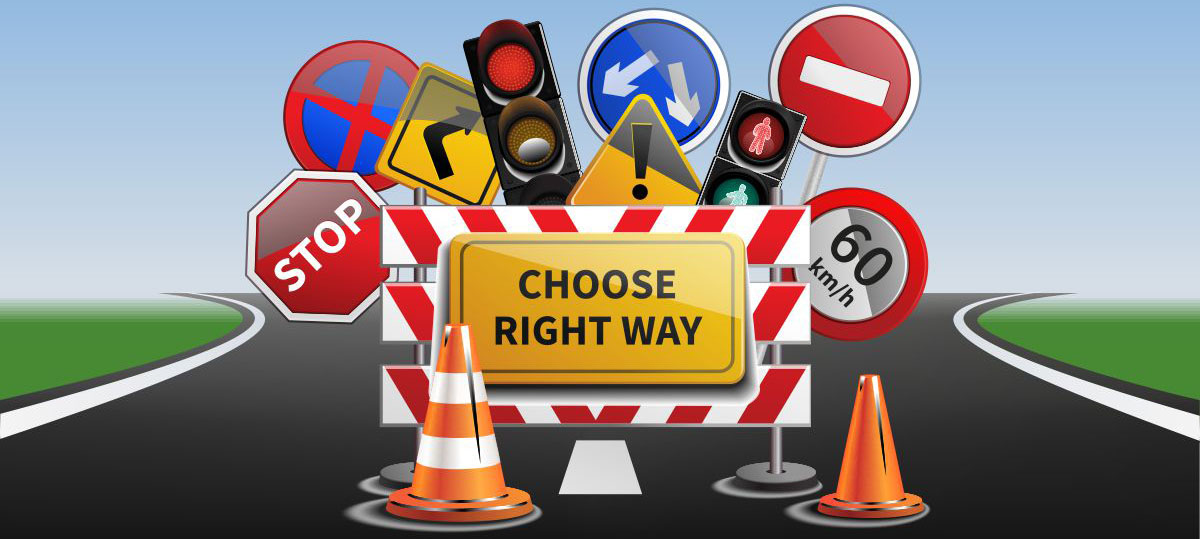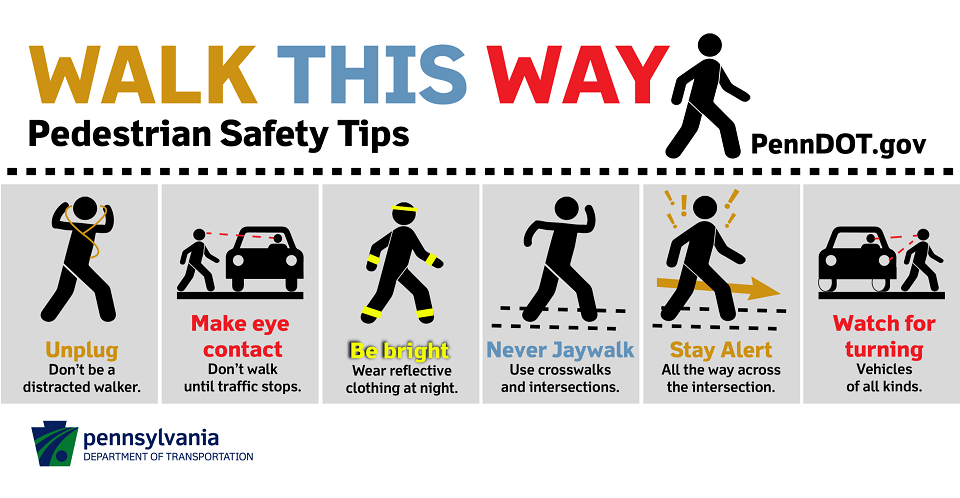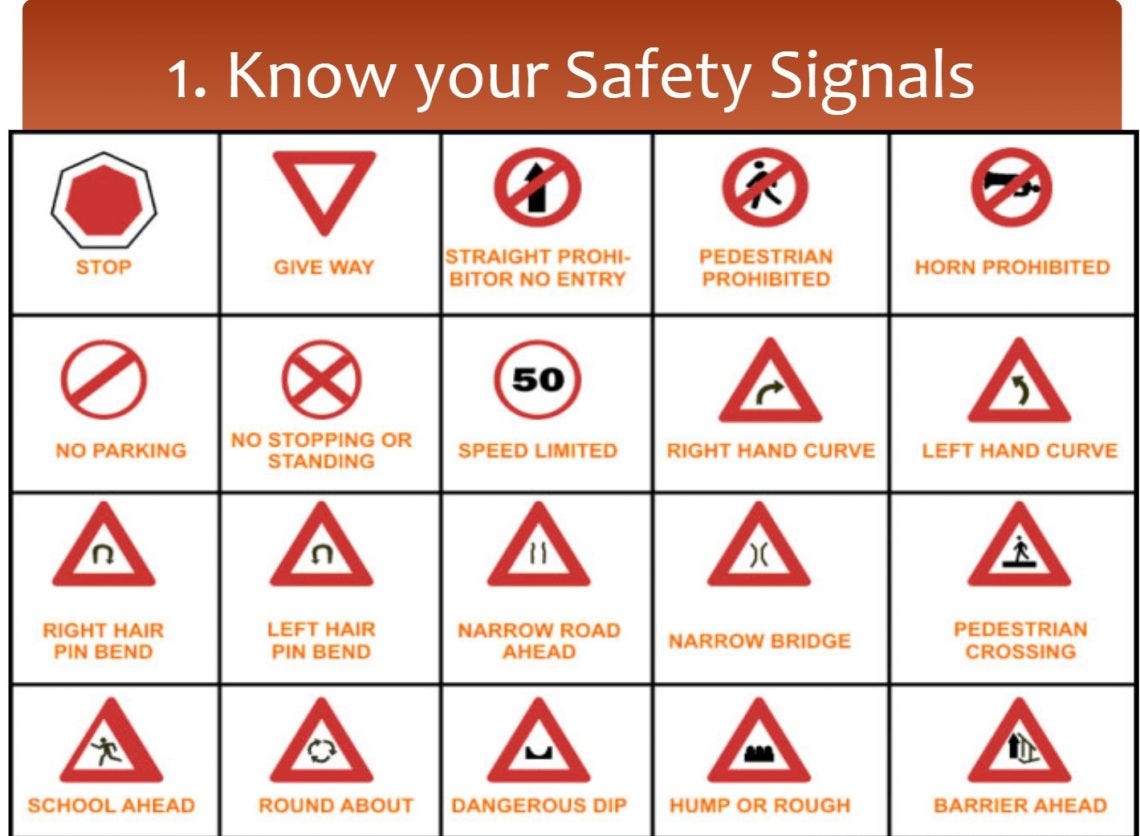Road safety is what keeps you and every other individual safe on roads. But what is road safety? Road safety basically refers to road users’ practices/ actions that aim to reduce road accidents, injuries, collisions and fatalities on the road.
In this guide, whether you’re a driver, pedestrians or cyclist, you’ll learn about what are road safety rules for you in place, best practices and road safety tips, that will help you and other road users stay safe.

Important Road Safety Guidelines
What Are the Road Safety Rules?
Road safety rules are a set of official guidelines that define how road users should behave on the road. These rules aid to reduce accidents risks and promote smooth traffic flow. They specify clear guidelines for everything from speed limits, seat belt usage, to when and how to safely cross the road.
But who made road safety rules? The Ministry of Transport or the Department of Traffic generally establish these rules. In the US, the Department of Transportation (DOT) develops and enforces these rules.
12 Road Safety Rules and Regulations Everyone Should Follow
Now that you know what road safety rules are, let’s talk about top road safety rules everyone should follow, although there are many, but in this section, we’ll cover the most essential ones.
Here are the top 12 road safety rules and regulations you must follow in the United States, as per the DOT, NHTSA, FHWA road safety guidelines:
- Always wear your seatbelt and helmet: This is required across all 50 states and even worldwide for drivers and passengers to wear a seatbelt. Cyclists and bicyclists should wear helmets to prevent injuries in accidents.
- Never drive under the influence: As per DUI law, it’s prohibited to drive a vehicle under the influence of alcohol or drugs, in nearly every state.
- Avoid texting or handheld phone use: When using the road, it’s strictly prohibited to use distraction devices. If any accident happens due to your carelessness, you’ll be strictly punished.
- Obey traffic signs, signals, and road markings: It’s mandatory to every road user about what traffic signals means, and which traffic signs indicate what, so they can be followed properly.
- Drive on the right side of the road: Standard across all states (except special regions), with right-of-way laws in place.
- Yield to pedestrians and emergency vehicles: When you spot a pedestrian on an intersection, you must yield. Also, you should stop for school buses and make way for sirens.
- Turn your headlights on during low visibility: Apart from turning on headlights at night, you should also use them in low-visibility areas, 1 hour before sunset and on rainy or snowy days, so you’re seen on the road.
- Stay within speed limits: Drive only within the speed limits or slow (in low-traffic areas) to avoid crash risk and severity. On the highway, 25-35 mph is ideal, while on low-speed areas, drive slowly.
- Maintain safe following distance: Recommended distance is ideally 3–6 seconds of distance in speed and a car length distance between two vehicles, to avoid collisions.
- Follow Hours-of-Service rules (for commercial drivers): Limits driving time and take short breaks to take rest and to prevent fatigue-related crashes.
- Be aware of road surroundings: Especially, while or before crossing the road, avoid distraction, and pay attention to incoming traffic from all sides. Drivers should also do the same.
- Use Designated paths: On roads, paths are designated for pedestrians and bicyclists. So always use designated paths, or if not possible, use the sides end of the road.
Best Road Safety Tips to Avoid Accidents
Even the most experienced driver often became the reason of an accident due to their own negligence. So just knowing about road safety rules isn’t enough, you should also learn how to avoid accidents on the road.
Here are the top driving tips to avoid accidents:
- Drive with a relaxed mindset, because while using a road, you owe a responsibility towards others drivers. So while driving, be aware of surroundings, avoid using a smartphone, follow traffic signals, drive within the speed limit, and even yield to other vehicles (when needed).
- Don’t drive when drowsy, fatigued or under the influence, because these are the most possible times in which drivers make driving mistakes. So always rest enough before going on a drive, or if not possible, park cars aside and take breaks and then progress ahead.
- Have a safe distance between you and another car in front of you (2-second rule). Because you never know when the car next to you suddenly stops or takes a sudden turn, so this safe distance keeps you safe from sudden collision.
- Don’t assume another driver’s intentions, because another driver can change intentions anytime. So even if you see a turn signal from the vehicle next to you, don’t go ahead, stay behind at a safe distance, because if the driver changes mind, you can be the part of a vehicle collision accident.
- Pay attention and be nice towards others. For instance, if you instinct that a driver behind you is trying to take the lead, let them take it. When at an intersection and there’s no signal light, if you spot pedestrians, let them safely pass first.
Safety on the Road Tips for All Types of Commuters
For a commuter (commuter is someone who travel or drive regularly between their homes and destinations), here are some additional road safety tips apart from the above-mentioned that can save you time, effort and protect you from unexpected trouble on the road:
- Leave early from home, ideally 10–20 minutes before. Because when you leave early, you do not rush, which means you’ll less likely speed up or take risky shortcuts, and hence, stay safe. Also, you will have enough time to handle traffic delays.
- Plan a better route, ideally back roads or alternative routes. Because if you drive during peak hour times (8 am – 9 am or 5 pm – 6 pm) or even go through the highways or main roads, you can likely get into a traffic jam. That’s why it’s better to find a safe routes, and use them.
- Add your emergency contacts in your phone’s speed dial. You can never know what can happen to you in a next minute, so it’s recommended to update certain contacts on speed dial. That way, in case of emergency, first responders will easily find out who to call.
Importance of Road Safety in Daily Life
Since roads are shared space, imagine, if there were no road safety rules made, the roads would be a huge mess – thousands of accidents, constant vehicle collisions and much disaster happens every minute. That actually explains the importance of road safety in daily life.
Road safety rules, sets a clear benchmark for road users, stating what action are allowed and what not, on roads. So when everyone follows basic rules like obeying traffic signals, using seat belts, avoiding distractions and staying alert, not just they avoid accidents, also saves money.
What Do Road Safety Campaigns Actually Do?
The road safety campaigns actually:
- Raise awareness about road safety issues, such as distracted driving, speeding, not wearing speed belt, not turning on headlights at nighttime, etc.)
- Educate public about Traffic rules/ laws, such as pedestrians rights, child seat safety law, helmet laws, traffic signal rules, yielding practices, etc.
- Warn abut fines, license suspension, vehicle towing, jail time or legal consequences for traffic rules violations.
Most recent road safety campaign examples involves “Share the Road: Look Twice for Motorcycles” and “Click It or Ticket“, which was raised by Texas Department of Transportation (TxDOT) from May 19 to June 1, 2025.
Key Facts About Road Safety You Should Know
After discussing why road safety matters in our everyday lives and how awareness campaigns make an impact, let’s go through some eye-opening road safety facts.
- Wearing a seat belt, researches have shown that helmet can significantly reduce fatal injury risk for front-seat occupants by up to 45%, and moderate-to-critical injury by 50%.
- Compared to men, women are 17 times more likely lost their lives in road crashes. Common reason is that women more often travel by foot or are passive passenger.
- In 2022, 50% of passenger vehicle occupants killed were unrestrained, means, half of the people who lost their lives were not wearing seat belts.
- Motorcyclists are about 28 times more likely to die per mile traveled compared to the passenger car occupants.
- Between 2020 and 2021, motorcycle fatalities increased by 8% which signals a rising trend in rider deaths as they research says motorcyclists are more likely to lost their lives compare to car drivers.
- Traffic crashes cost society roughly $340 billion per year or 3% of their gross budget, in medical care and vehicle damage, which could have spent in some essential issues.
Pedestrian Safety Tips: How to Stay Safe as a Pedestrian?

Let’s discuss few rules for walking on the road and best pedestrian crosswalk safety tips to avoid accidents and injuries:
Be seen on the road: Especially in low-light conditions, it’s a must for you to wear a high-visibility clothing, and you can even grab a flashlight while walking. During daytime, it’s a personal choice, but wearing bright-color will enhance your appearance on the road.
Be attentive while on the road: When on the road and passing over a walkway, always stay attentive and avoid using distraction devices. Also, keep your eyes up while walking straight, look left-right-left and make eye contact with drivers while crossing the street.
Use Intersection or Crosswalk: When available, always cross the road through intersection or crosswalks, following the traffic signals. As these are the zone where driver accept you and stay cautious.
Choose well-lit crosswalk for crossing: If there’s no intersection available, look for the well-lit area on the around, from where you can have the complete view of traffic, and proceed that way for crossing need.
Walk with others: Always walk with other and collectively in a group. Because it’s easy for drivers to not spot a one individual, but a group is highly-visible and a safe option too.
How to Be a Safe Pedestrian? Walking Safety Tips for Urban Pedestrians
Urban areas are almost every time full of foot and vehicle traffic, especially during peak hours in early mornings and late afternoons. At such times, there’s a rush on crosswalks, intersections, driveways, and even public transport stops, posing more accidents chances.
To navigate these busy and peak hours in urban zone, here are few pedestrian safety tips you can adapt to avoid danger risks:
- Use Crosswalks for safe crossing: Most people in rush do jaywalking and end up putting them in danger. So, only use crosswalk, which is a designated crossing path for pedestrians.
- Obey traffic signals and signages: Many accidents occur when both drivers and pedestrians avoid considering traffic signals. That’s why, stay aware, respect and follow traffic signals.
- Choose safe walking route: If you’re a commute, you should find a path with well-maintained sidewalk, as sidewalk are proven in protecting pedestrians from accidents.
- Opt for low-volume traffic streets: If possible, choose streets with low volume and less-speed traffic areas, as in such streets, accidents risks will be reduced, and you can safely use sidewalks and walkways.
Crosswalk Safety Guidelines for Adults and Children
A crosswalk is the basic to pedestrian safety, that’s why for pedestrians, understanding crosswalk signage and safety rules are vital, especially for children and commuters. Here’s how you can get most out of crosswalk:
- Wait for pedestrian interval: At many intersections, traffic signals are there to control traffic flow and pedestrian traffic. So when traffic signal give you a leading sign, before giving vehicles a green light, proceed but make sure with caution.
- Stop at Curb and check surrounding: Even if there’s a leading sign, before using crosswalk, always stop at curb (the starting point of sidewalk), watch out left-right-left and then proceed while still actively watching around.
- Aware yourself with crosswalk signals: Understand about crosswalk signals. Most likely, you’ll encounter a WALK (a person with walking position) sign and DON’t Walk sign, when you see any of them, act accordingly but don’t run.
- Use well-lit crosswalks: Especially, at nighttime, choose a well-lit crosswalk, so the drivers stay aware that they can expect a pedestrian at a walkway.
What Does Pedestrian Traffic Really Mean?
Let’s first understand what does pedestrian mean? Pedestrian means, a person who is walking, not travelling via vehicle. Pedestrian traffic means the volume of foot traffic (or people who are walking) in a location or road.
When Possible Pedestrians Should Walk?
When possible pedestrians should walk on sidewalks or road shoulder. The sidewalk is the paved area that is available on one/ both sides of a road.
If There Is No Sidewalk a Pedestrian Should Do What?
If there’s no sidewalk, pedestrians should:
- Walk on the left side or edge of the road: When you walk facing oncoming traffic direction, drivers can see you and, you’ll have enough time to react, if a vehicle approach towards your way.
- Avoid using electronic devices: Attentively walk and avoid using smartphones or headphones. Also, stay aware of surroundings, especially when you are ready to cross the road.
Under Traffic Laws – Is a Bicycle a Vehicle?
Most people asked: Is a bicycle a motor vehicle? Yes, it is. In all 50 U.S. states, a bicycle is legally defined as a vehicle. That said, bicyclists are granted and have the same rights and responsibilities as other motor vehicles while on the road.
Risk of Motorcycle Accidents and How to Reduce It
Riding a motorcycle is thrilling, but it carries much higher risks versus driving a car. NHTSA shared that, in 2023, 6,335 motorcyclists killed, which is a big number of motorcyclists death since 1975.
That doesn’t mean you should stop using motorcycle, instead, here are few tips from JACKWIN, that helps you in reducing motorcycle accidents:
- Always wear a DOT-compliant helmet – as searches says helmets significantly helps lower death risk by up to 42% and brain injury by about 69%.
- Take certified rider training and get a proper motorcycle license – because about 36% of fatal crashes involved unlicensed riders and underage motorcyclists.
- Never speed or ride while impaired – these factors are the major cause of significant increase in crash severity.
- Wear visible gear and maintain your bike – Wear high-vis jacket (if you’re a worker) or wear high-vis shoes during nighttime driving. You can also use highly-visible reflective tape and apply that over your shoes or motorcycle body. The tape will enhances the visibility of your vehicle.
How Safe Are Motorcycles Compared to Cars?
Motorcycles aren’t safer at all compared to cars and other vehicles because a motorcycle rider is 30 times more likely to encounter a fatality verses the one driving the car. As per stats of 2022 and 2023, fatality rates for motorcycles were recorded at 26–31 deaths (per 100 million miles), compared to only 1.1–1.3 deaths for cars.
The reason is obvious – motorcycles lack structural protection, and even minor crashes can lead to serious injuries. Road safety rules strictly mandate motorcyclists to wear helmets and follow the traffic laws and rules.
What is a Driver Safety Report and What Does It Include?
A Driver Safety Report (often known as driver scorecard) is basically a comprehensive report of a driver’s driving behaviors, which is collected or generated via telematics systems. The driver safety report generally includes a Driver/Vehicle Report, which shows scores (or stat) in each risk category, and a Summary Chart that compares performance against safety targets.
How Many Car Lengths Between Cars When Driving?
A quick rule of thumb is to have a one car length distance for every 10 mph of speed. So if you’re driving at 50 mph, leave about five car lengths between you and the car in front of you.
You can also use “three-second rule” to measure the safe distance. For that, pick a landmark or pole, let the car go ahead before you pass it, then count “one-thousand-one, one-thousand-two, one-thousand-three.” If you pass before “three,” slow down and maintain that distance.
Final Word from JACKWIN
With understanding and following road safety and traffic rules – accidents, road injuries and fatalities can be avoided. These are just the safety measure, when followed, can save your life, when not, can cost your life.
JACKWIN, is a China leading road safety and parking products manufacturer since 2008. We deal in wholesale prices so if you need visibility jacket or reflective tapes, which is great in enhancing your visibility on road, Contact Us today!


-80x69.png)


